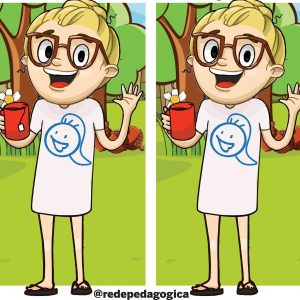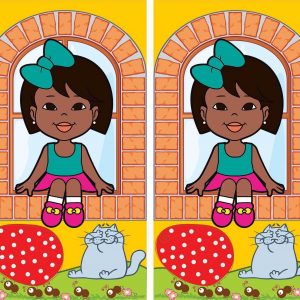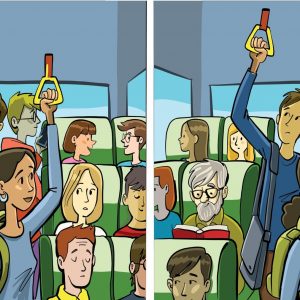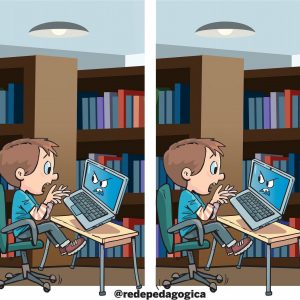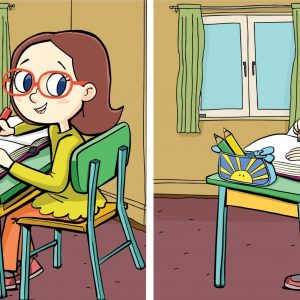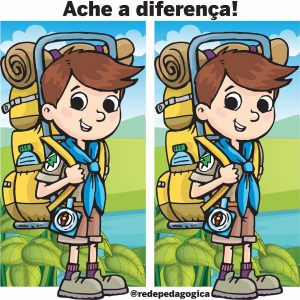Boost Letter B Mastery with a Fun Spot-the-Difference Puzzle
Ready to turn letter learning into an exciting adventure? This playful illustration features a curious child clutching a giant green “B,” perched in a cozy learning nook. But there’s a twist—two nearly identical images hide subtle differences that challenge young eyes and reinforce letter recognition. In this article, we’ll explore why blending the Letter B with a spot-the-difference game turbocharges literacy skills, share tips to guide your child, and reveal creative ways to extend learning beyond the puzzle. Let’s dive in!
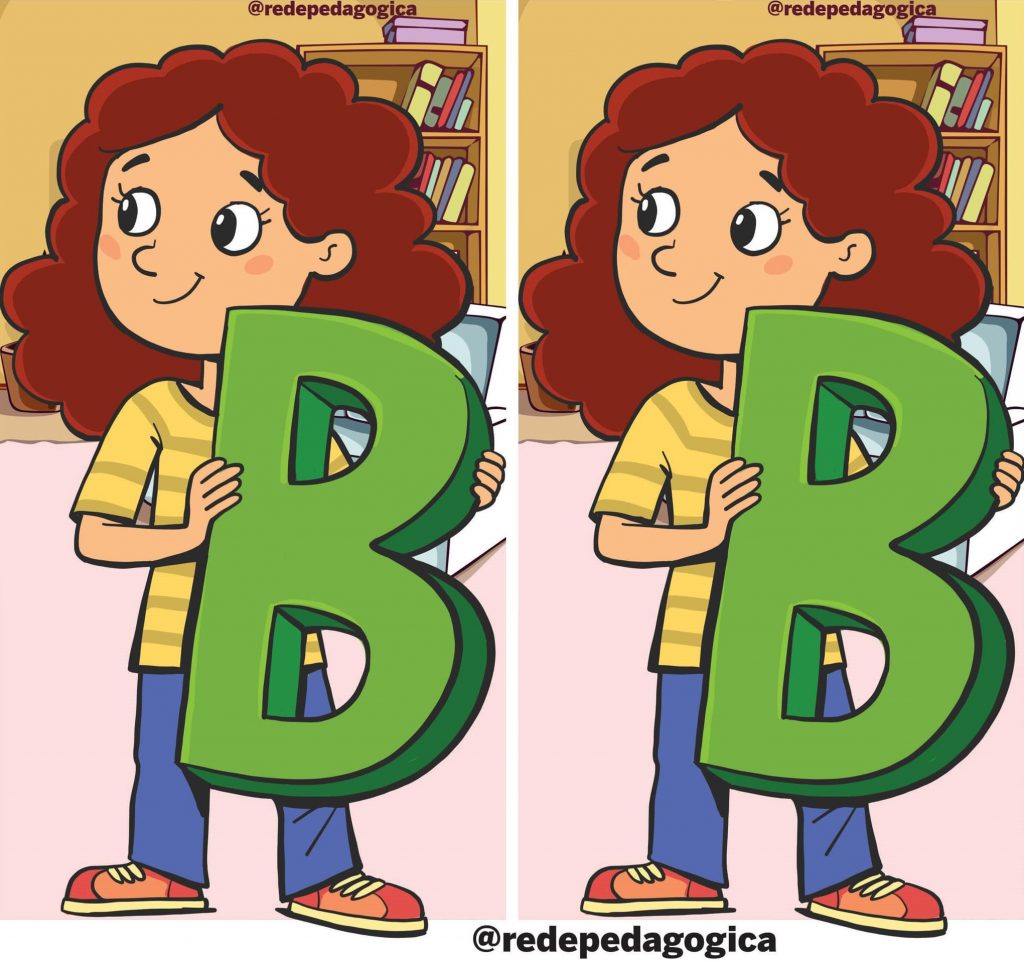
The Importance of Letter Recognition
Before kids can dive into reading and writing, they need to confidently identify each letter of the alphabet. Recognizing letters by sight lays the foundation for phonics, spelling, and fluent reading later on. The Letter B often comes early in that journey—after all, “B” begins words like “ball,” “book,” and “bear,” which are staples in toddlers’ worlds. When children can spot “B” in different contexts—on flashcards, in books, or even in playful puzzles—they build strong neural connections that make future reading tasks feel like a walk in the park.
Why Focus on the Letter B?
You might wonder, “Why single out the Letter B?” Here’s the scoop:
- Phonetic Powerhouse: The /b/ sound is clear and simple, making it one of the first consonants kids master.
- Everyday Connections: From breakfast to butterfly, “B” pops up in countless familiar words.
- Visual Distinctiveness: Its two rounded lobes give “B” a memorable shape that stands out among straighter letters.
By spotlighting the Letter B in a fun puzzle, we give children repeated exposure to its shape and sound in a context that feels like play rather than drill.

How Spot-the-Difference Games Enhance Learning
Spot-the-difference puzzles aren’t just for rainy-day fun—they’re a secret weapon for cognitive and literacy development:
- Sharpens Visual Discrimination
Kids learn to notice tiny tweaks—like a missing bookmark on a book or a shifted eyebrow on the child’s face—training their brains to differentiate similar shapes. That skill directly supports distinguishing “b” from “d” or “p” from “q,” which often trip up early readers. - Boosts Attention Span
Searching for subtle differences requires sustained focus. The more puzzles they conquer, the longer they can concentrate on letter-sound activities and storytime. - Reinforces Memory
Remembering which areas they’ve scanned trains short-term memory, which is crucial when kids recall letter-sound rules and sight words. - Adds a Multisensory Twist
When the puzzle centers on the Letter B, kids engage visual (seeing the big “B”), auditory (saying “Buh”), and kinesthetic (pointing out differences) channels—all in one go.

Guiding Your Child Through the Puzzle
Here’s a simple step-by-step approach to make the most of this Letter B spot-the-difference:
- Introduce the Scene
Start by pointing out the big green “B.” Say, “That’s the letter B! Can you make the ‘buh’ sound?” Encourage them to trace the shape in the air with their finger. - Establish the Challenge
Explain, “In these two pictures, someone hid seven tiny changes. Let’s find them together!” Framing it as a mystery hunt amps up excitement. - Divide and Conquer
Mentally split the image into zones: the child’s face, the letter B, the background bookshelf, and the floor area. Tackling one area at a time prevents overwhelm. - Encourage “B” Bird’s-Eye View
Prompt your child to look for any detail that touches the letter B—maybe a shifted shadow or a missing edge. This reinforces focus on the letter shape itself. - Celebrate Each Find
Every time they spot a change—whether it’s an extra book on the shelf or a slightly different expression—cheer them on. “You’re brilliant at spotting BUtterflies—and Bs!” - Count the “B”s
Once the differences are out in the open, have your child count every Letter B they see in each image. This simple task doubles down on recognition practice.

Creative Extensions Beyond the Puzzle
Once you’ve conquered the seven differences, keep the B-learning momentum rolling with these playful activities:
- Bingo with “B” Words
Create a 3×3 bingo card filled with images of “b” words—ball, banana, bear, baby. Call out words and have your child cover the matching picture. - Bake-and-Learn
Whip up banana muffins or blueberry pancakes together. As you measure and stir, emphasize “B” words: “Let’s add biiiiig bananas!” - B-Shape Hunt
Go on a scavenger hunt around the house or yard to find objects shaped like B or starting with B—bottle, book, bush. Snap photos to make a “B” scrapbook. - Block Letter Crafting
Provide strips of paper or cardboard to form a 3D letter B. This hands-on building reinforces the letter’s two bumps and straight spine. - Storytime Spotlight
Read a short “B” captioned book—like Brown Bear, Brown Bear, What Do You See?—and ask your child to point out every “B” word you read together.

Tips for Keeping It Simple and Fun
A few friendly pointers to keep letter-learning light and breezy:
- Keep Sessions Short
Five to ten minutes of focused play is better than forcing a half-hour slog. - Use Positive Language
Swap “don’t get it wrong” for “let’s see how many you can spot!” - Follow Their Lead
If they gravitate toward building B with blocks over reading a story, roll with it—variety cements learning. - Celebrate Effort
A high-five or a silly “Buh-ray!” dance rewards persistence just as much as correct answers.
The Long-Term Payoff
By weaving spot-the-difference puzzles around the Letter B into your child’s routine, you’re laying groundwork for:
- Fluent Reading
Early mastery of letter shapes and sounds leads to confident decoding of simple words. - Strong Writing Skills
Visual discrimination helps kids form letters accurately on paper—writing “b” without confusing it for “d.” - Lifelong Learning Enjoyment
When learning feels like play, curiosity sparks and stays ignited through school years and beyond.
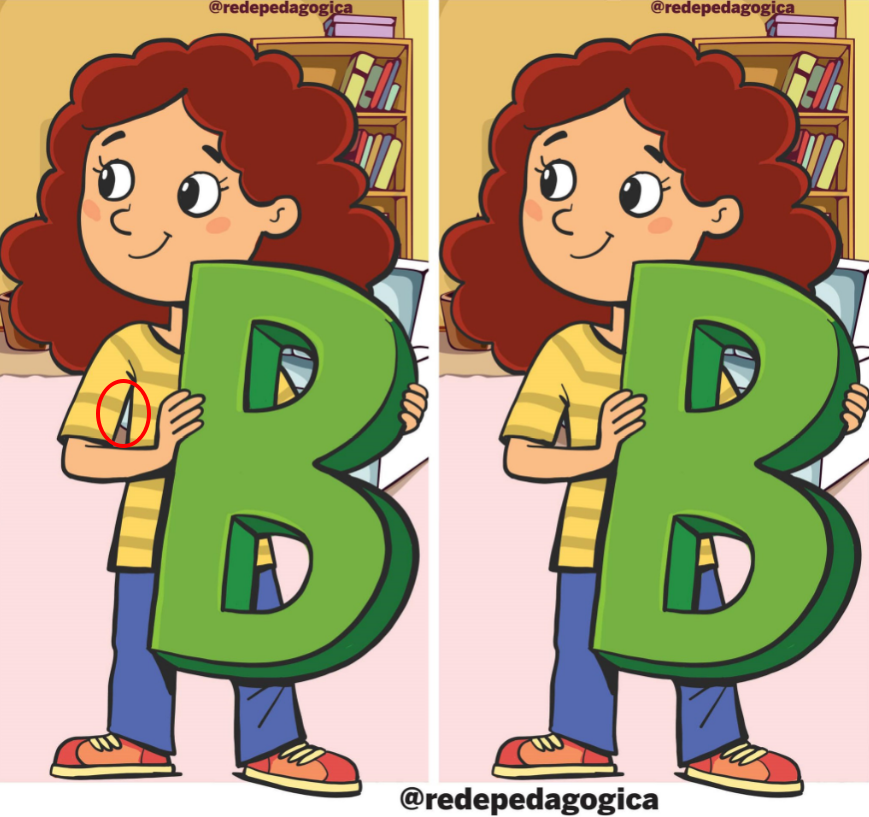
Conclusion
Merging spot-the-difference puzzles with targeted letter practice creates an engaging, multisensory learning experience. By focusing on the Letter B in a fun, low-pressure puzzle, kids hone visual discrimination, boost memory, and strengthen phonics skills—all while having a blast. From counting every “B” in the pictures to baking banana muffins and crafting block letters, these playful extensions keep the momentum rolling. So grab your magnifying glass (real or imaginary), point out that big green “B,” and watch your little reader soar—one playful “Buh” at a time!
